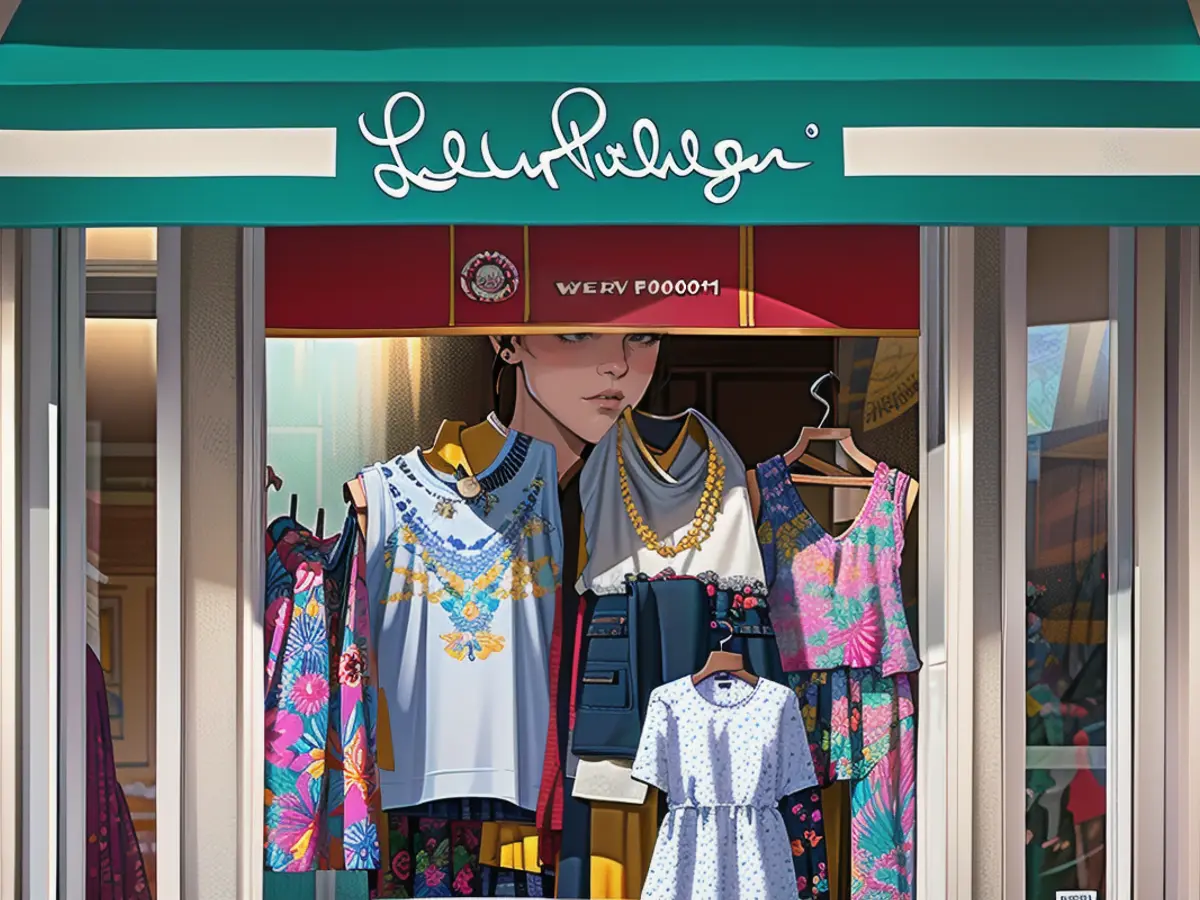Lilly Pulitzer rebrands its classic resort label, returning to its original origins.
A while ago, the vibrant prints by Lilly Pulitzer were popular on college campuses in the United States, and a store in New York's Bryant Park for their 2015 partnership with Target attracted hordes of Millennial shoppers at a time when they were deeply into preppy styles. That year, sales increased by 22%.
Since then, fashion has shifted, and loud colors and patterns now feel out of place in the era of discreet luxury. This is reflected in Lilly Pulitzer's sales, which increased by just 1% last year to $343.5 million.
To kickstart the brand's new phase, they revealed a new logo last week. Although it still has the signature pink hue, the typeface has now been inspired by the 1950s - the decade the company was founded.
To reach out to a younger demographic, Lilly Pulitzer must do more than just change their font. Gen-Z now sets the trends, and their idea of preppy style is quite different. Instead of shift dresses, they are crazy about oversized blazers and baggy pants. Rather than trying to fully conform to Gen-Z's tastes, Lilly Pulitzer is focusing their efforts on customers who "loved the brand but hadn't shopped in a while", according to the CEO, Michelle Kelly. This includes occasion wear, where vibrancy and boldness still work, despite the current trend for understated luxury. In March, they announced a collaboration with Badgley Mischka, with prices ranging from $400 to $700 instead of their usual range of around $100 to $300.
"There are definitely moments in the culture where trends work in our favor or not," Kelly said. "Our approach is to do what we do and be aware of changes."
The cultural climate may also be favoring Lilly Pulitzer once more. Palm Beach has recently gained popularity as a fashion destination, attracting brands like Hill House Home, Nili Lotan, and MyTheresa. Plus, the 1960s style of Palm Beach has come back into the spotlight with Apple TV's series "Palm Royale".
Above all, it's a brand that is loved by many, from those who were friends of Pulitzer during her time to their granddaughters who are now posting their purchases on TikTok.

"Lilly is one of the rare brands that customers of different ages can attend an event, shop, and not be surprised that someone from a different generation is also shopping," Kelly explains. "It's really unique that all ages can share an affection for this brand."
The new face for Lilly
The brand was founded in 1959 by Lilly Pulitzer and her husband, who also owned orange groves. Joining the pair was a dressmaker who created dresses bright enough to hide juice stains from the juice stand where she sold her husband's orange juice. The dresses were so popular that she started selling them, too.
By the 1960s, Lilly Pulitzer had become a symbol of American style, with Jacqueline Kennedy Onassis and Wendy Vanderbilt among its dedicated fans.
In 2010, the company was purchased by Oxford Industries, which also manages other brands like Tommy Bahama and Johnny Was. It is now headquartered in Philadelphia but maintains its deep connection to Palm Beach.
"Lilly Pulitzer is the most rooted in an American Resort aesthetic. It's always remained grounded in the Palm Beach mindset," explained Robert Burke, CEO of the retail consultancy Robert Burke Associates.

Kelly sees the brand's history as an advantage when trying to connect with a younger audience: "Gen-Z wants authenticity, and we have an authentic brand story that we lean into, which sets us apart in this saturated market."
However, she's aware that adapting to the present is just as important as looking back at the past. The logo change is only one part of a wider "refreshing" process Lilly is undergoing. The goal is to maintain the brand's rich history and dedicated customer base while also making it appealing to a younger audience.
"We saw the opportunity to have our visual identity and overall branding better suit our needs," Kelly says. The new logo, by designer Robin Kramer, strikes a balance between looking back and moving forward, she notes. They also plan to expand to new locations and collaborations. The brand's focus remains strong on drawing from its rich origins while pushing into the future.
The company has a strong focus on selling directly to consumers, with a majority of their sales (85%) coming from their own channels. This keeps them less affected by issues in the wholesale industry, but more dependent on their ability to connect with customers directly. Around 66% of these direct sales happen online. The brand aims to expand its presence in physical stores by opening six new locations in 2024, including a new shop in Cranston, Rhode Island, which opened in April. To attract both new and returning customers, Lilly Pulitzer is also increasing its presence on TikTok and tailoring its ads accordingly to be shown on different platforms.
Their goal is to continue pleasing their longtime fanbase while also enticing new shoppers.
"Sometimes brands experience a resurgence in popularity because they decide to take a more modern approach," shares Burke. "There isn't a fixed guideline for this, but their foundation is incredibly solid."
This write-up was originally published in The Business of Fashion, a collaborating partner of CNN Style. Check out more stories from The Business of Fashion [here].
Read also:
- Caught up in the present: the end of "The Crown"
- Through New Year's Eve with TV shows
- What's next for the series hits?
- Which shows will be on?
Given the text, here are two sentences that contain the words 'style' and 'Fashion':
The new logo has incorporated a 1950s style, a nod to Lilly Pulitzer's fashion origins.Gen-Z now sets the trends in fashion, with their preference for oversized blazers and baggy pants.
Source: edition.cnn.com








